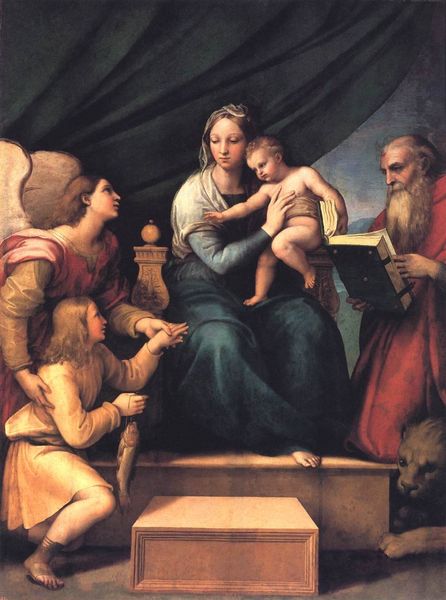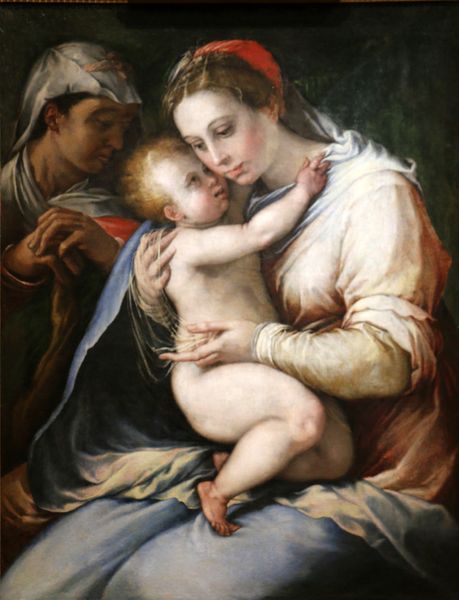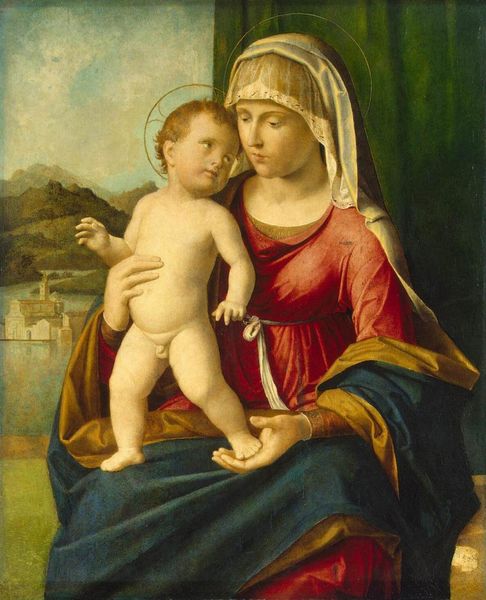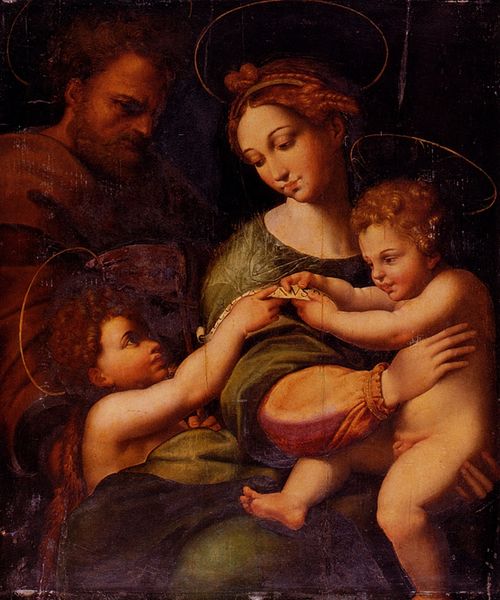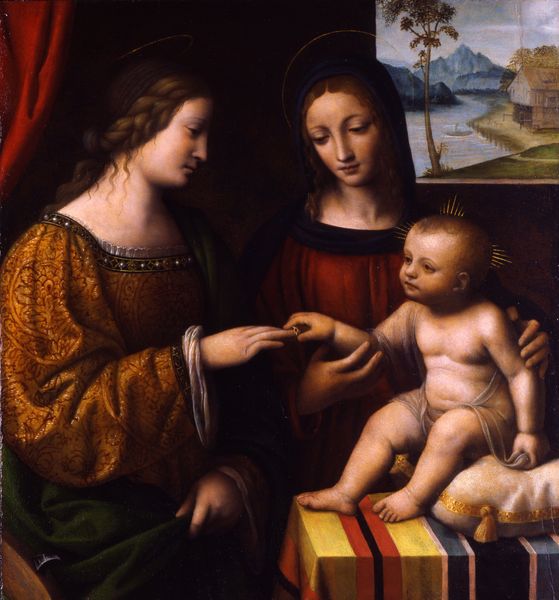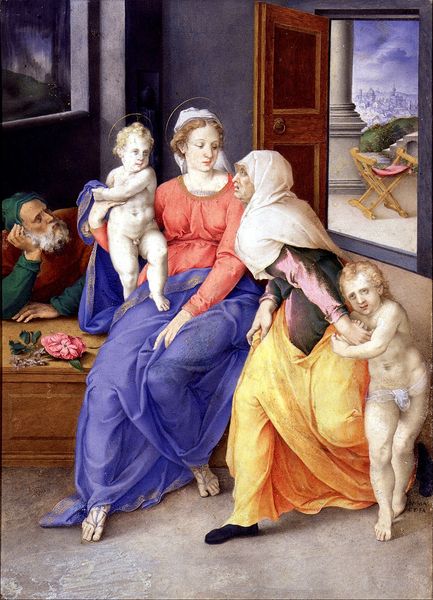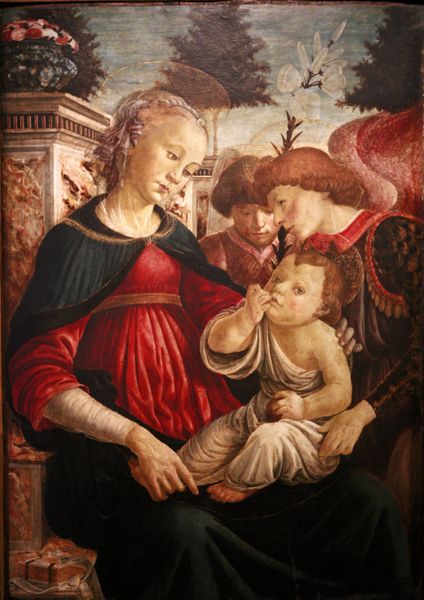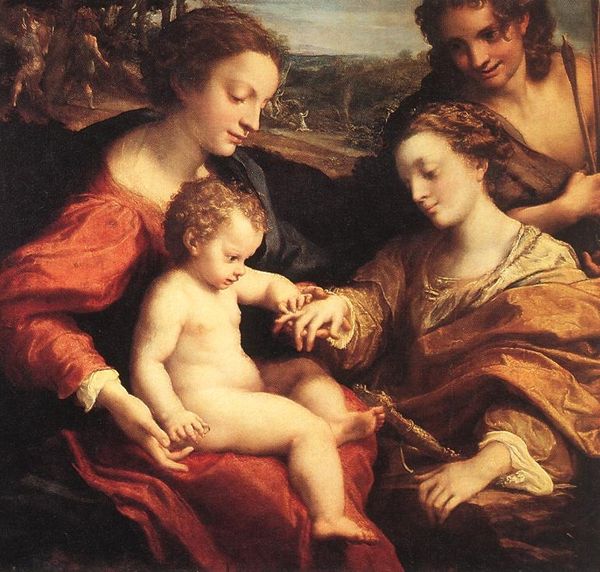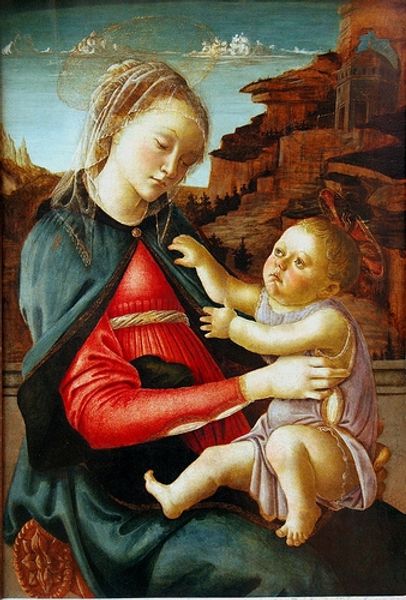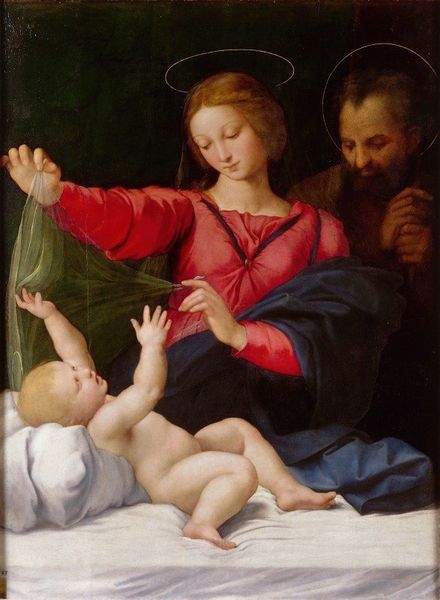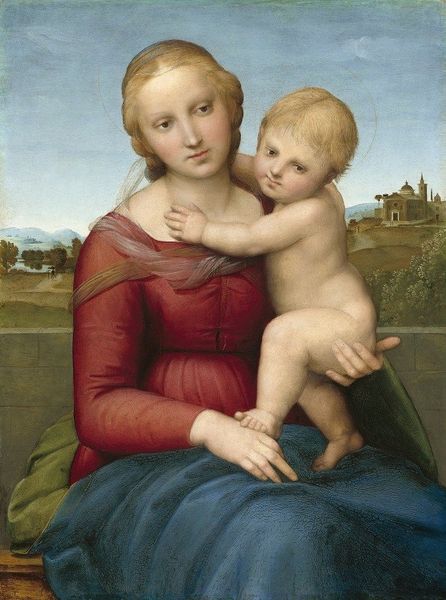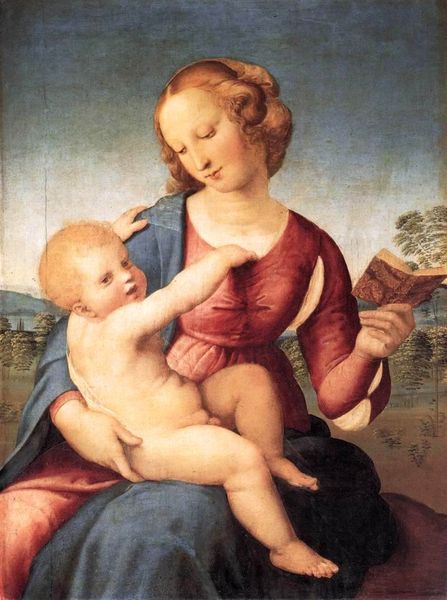
panel, oil-paint
portrait
high-renaissance
panel
oil-paint
figuration
history-painting
italian-renaissance
Copyright: Public domain
Curator: Examining Raphael’s “The Holy Family,” executed in 1506, one observes a masterclass in High Renaissance composition. It is currently held at the Pushkin Museum in Moscow. What strikes you initially about it? Editor: That infant is about to deck Mary. Seriously, look at the clenched fist! And overall, this painting feels so incredibly posed, like everyone got notes from the director on where to look. Curator: Indeed. Note the pyramidal structure—a compositional device favored during the Renaissance. The figures are arranged in a triangular form, creating a sense of stability and harmony. Mary forms the apex with the Christ Child placed centrally. Observe how the gentle curve of Mary’s neck echoes that in her son. Editor: The colors are throwing me off. Joseph looks sickly. And that sky? It looks like something from a theatrical backdrop. It's like they all exist in this strange, idealized bubble, untouched by reality. Maybe that’s the point. Curator: Raphael's use of sfumato, a subtle blending of colors, lends a soft, almost ethereal quality to the figures. It blurs harsh lines and creates a sense of depth, contributing to the painting's idealized atmosphere. It seems to me he is harmonizing earthly forms to embody divine spirit. Editor: Or maybe just trying to make everyone look as attractive as possible. Everyone's gazing downward with these ridiculously long necks. It’s beautiful, but beauty as a shield, a deliberate choice to focus on perfection rather than any grit or emotion. But is that the goal of this work? I mean what is the painting ultimately trying to communicate? Curator: We might consider the work's semiotic structure, noting how gestures and expressions act as signifiers. Joseph’s solemn expression may represent awareness of Christ's fate, his eyes cast down. In contrast, the child’s forward thrust hints toward future acts, while the architecture suggests a symbolic connection to a heavenly city and future destiny. Editor: So much implied drama behind the serene faces, hidden in plain sight. A perfect piece for speculation. It’s strangely magnetic because you almost need to squint to understand. Curator: The painting's success rests in its careful balance of classical idealism with an undeniable humanity. It invites us to look closer, even when it feels remote and formalized. Editor: Agreed. "The Holy Family" whispers rather than shouts, inviting repeated viewing to peel back its carefully constructed layers of meaning.
Comments
No comments
Be the first to comment and join the conversation on the ultimate creative platform.


